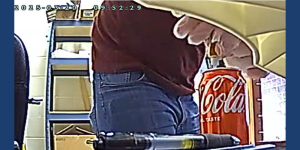The greatest issue faced by the prison system will be access to healthcare within the prison itself. Prisons with a healthcare wing already have to deal with a range of physical and mental health issues, so the added pressure of having prisoners who could have COVID-19 will leave those with new or pre-existing health issues in difficulty when trying to obtain medical care.
Prisons will, of course, need access to testing kits, which appears to be something of an issue in the wider community, as many medical practitioners on the front line are currently not being tested. Without the ability to test prisoners, prisons will be forced to isolate all those who are symptomatic, have been exposed to the risk of contracting the virus, and those who are most vulnerable.
On a logistical level, the service will also have to consider how basic amenities are delivered, such as meals and access to education or employment where eligible.
With the increase in convictions for historic sexual offences, the prison service has found itself with an unprecedented amount of older inmates, aged 70 years and over, who according to government guidance are required to self-isolate. With only select prisons having wings designated for geriatric inmates, space is limited and it may force inmates to be moved to different prisons to accommodate isolation.
On a logistical level, the service will also have to consider how basic amenities are delivered, such as meals and access to education or employment where eligible. In some cases, it may be that this is simply not possible and inmates will find themselves without education or wages for some time.
At an individual level, where there has been a diagnosis of COVID-19, it will almost certainly mean that there will be a consideration as to whether visits from family, friends and legal representatives will be cancelled. Many inmates are miles away from home and consequently, the journey made by family and friends can be a long one, only possible a couple of times a month. The lack of face-to-face contact with loved ones will inevitably have a detrimental impact on prisoners’ wellbeing, but without access to Skype or the internet, it is difficult to see how this will be avoided.
While at this stage it is entirely speculative, it is anticipated that over the next few days any teething problems will be identified as the mass roll-out of remote court hearings begins, with in-person hearings being drastically reduced from this week.
Given the difficulties faced by the prison service in this situation, it would appear that the best way to try to mitigate the disruption to prisoners’ lives is to ensure that there are enough officers available to cater to the augmented regime, ensuring prisoners are able to have food delivered to them in their cells, for example. Prisons will need to work closely with those agencies providing healthcare within the prison itself, again ensuring that there are enough staff to visit inmates in cells and that they have the right PPE to facilitate visits. We may see prisons separated into zones to ensure that those prisoners not at risk can continue as best they can engaging with the regime.
One alternative the prison service will be considering is whether it can identify low-risk prisoners, who are serving short determinate sentences, that would be eligible for Home Detention Curfew, and whether it would be safe for the community for them to serve the remainder of their sentences on licence. Whilst this may be considered a controversial move, the reality is that there is a finite amount of resource and funding available to the prison service and unless it is able to free up space, time and manpower those who are at risk will inevitably suffer.
How will the Court adjust to isolation?
While at this stage it is entirely speculative, it is anticipated that over the next few days any teething problems will be identified as the mass roll-out of remote court hearings begins, with in-person hearings being drastically reduced from this week. One anticipated change is that the system will recognise that remote hearings are possible and could be used more widely, to accommodate those who are located far from the designated court or have care commitments which make court attendance more difficult.
[ymal]
However, only time will tell if the court service has the technology to meet the demands of remote working. This is particularly the case for those advocates due to appear before a criminal court, where there has been a severe lack of funding invested in court hearings, while reduced court sitting days have already created a backlog of cases to be heard which will now not be dealt with for some time.





















